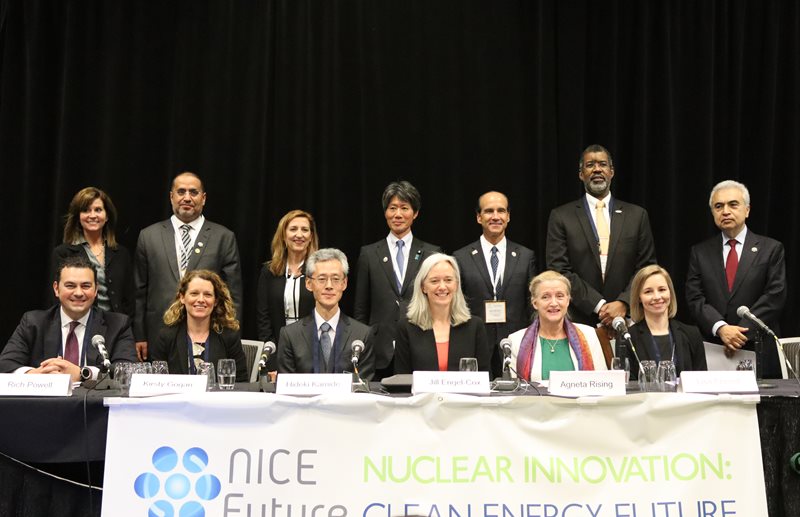Action is needed to expand the share of nuclear
Comments made by Agneta Rising, Director General, World Nuclear Association in a side event at the 10th Clean Energy Ministerial, Vancouver, Canada
28 May 2019
“Action is needed to expand the share of nuclear generation in the clean energy future. We will need much more nuclear energy if we are to deliver on environmental, economic and sustainable development objectives.“
This was the key message from Agneta Rising, Director General of World Nuclear Association, speaking at the 10th Clean Energy Ministerial in Vancouver, Canada, today.
The Clean Energy Ministerial (CEM) is a high-level global forum to promote policies and programmes that advance clean energy technology. The Nuclear Innovation: Clean Energy Future (NICE Future) initiative was established at the 9th CEM in Copenhagen, Denmark in May 2018 to play a crucial role in multilateral dialogue and engagement of policy makers on the role of nuclear energy as part of a low carbon mix contributing to sustainable development.

Speaking at the Breakthroughs: Flexible Nuclear Energy Systems in a Clean Energy World event, Agneta Rising said that the most efficient use of a nuclear reactor is for it to supply electricity constantly at full output. However, to allow variable renewables to complement nuclear generation in the electricity mix, nuclear reactors are already being operated flexibly where required.
Rising said, “New designs and technologies will further enhance the ability of nuclear power to facilitate the integration of more intermittent sources into a low-carbon generation mix.”
50 new reactors are due to start in a total of 12 countries between 2016 and 2020. Two of those twelve countries are hosting their first nuclear power plant. This new build is equivalent to adding nearly 15% to global nuclear capacity.
Innovation is key to this growth. Those 50 new reactors are based on 17 different designs, and 10 of those designs are being built for the first time, with capacities ranging from 27 MWe to 1750 MWe.
However, studies by both MIT and OECD NEA have concluded that high levels of intermittent renewable generation, in particular in the absence of nuclear generation, leads to much higher system costs and higher emissions.
“We should take a dispassionate look at what would be the optimal energy system to deliver on our environmental, economic and sustainable development objectives”, Rising said.
Notes to Editors
World Nuclear Association is the international organisation that represents the global nuclear industry. Its mission is to promote a wider understanding of nuclear energy among key international influencers by producing authoritative information, developing common industry positions, and contributing to the energy debate, as well as to pave the way for expanding nuclear business.
For press queries, please contact:
Jonathan Cobb
press@world-nuclear.org
+44 20 7451 1536
+44 7719 329790